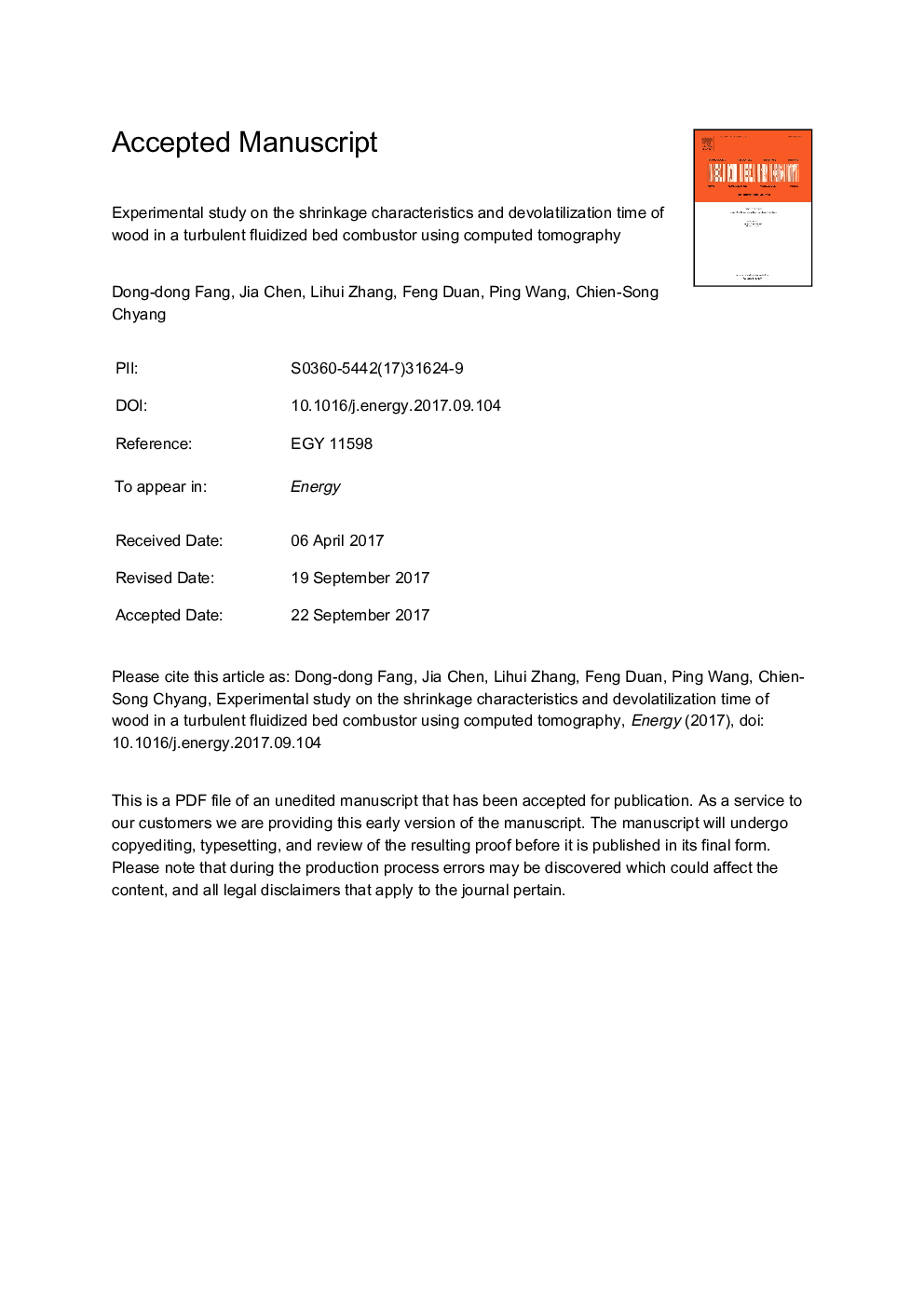| Article ID | Journal | Published Year | Pages | File Type |
|---|---|---|---|---|
| 8072617 | Energy | 2017 | 35 Pages |
Abstract
Computed tomography (CT) was used to scan the samples obtained from devolatilization in a turbulent fluidized bed combustor (FBC). The evolution of three-dimensional shrinkages at different residence time was measured and visualized successfully without destroying the sample. The effects of the bed temperature, and the fuel species on the mass conversion, devolatilization time, and shrinkage characteristics were also investigated. Four common Chinese wood types, poplar, Chinese fir, oak, and teak were used. The results show that the shrinkage and mass conversion increase with increasing residence time. In addition, the devolatilization time and final tangential and radial shrinkages decrease with increasing bed temperature. The final longitudinal shrinkage shows an inverse trend compared with the other two shrinkages. The tangential shrinkage is slightly greater than the radial shrinkage and much greater than the longitudinal shrinkage for all tests. Poplar wood as a kind of cork, which has the highest volatile matter content among the four woods, showed the maximum final shrinkages.
Related Topics
Physical Sciences and Engineering
Energy
Energy (General)
Authors
Dong-dong Fang, Jia Chen, Li-hui Zhang, Feng Duan, Ping Wang, Chien-Song Chyang,
